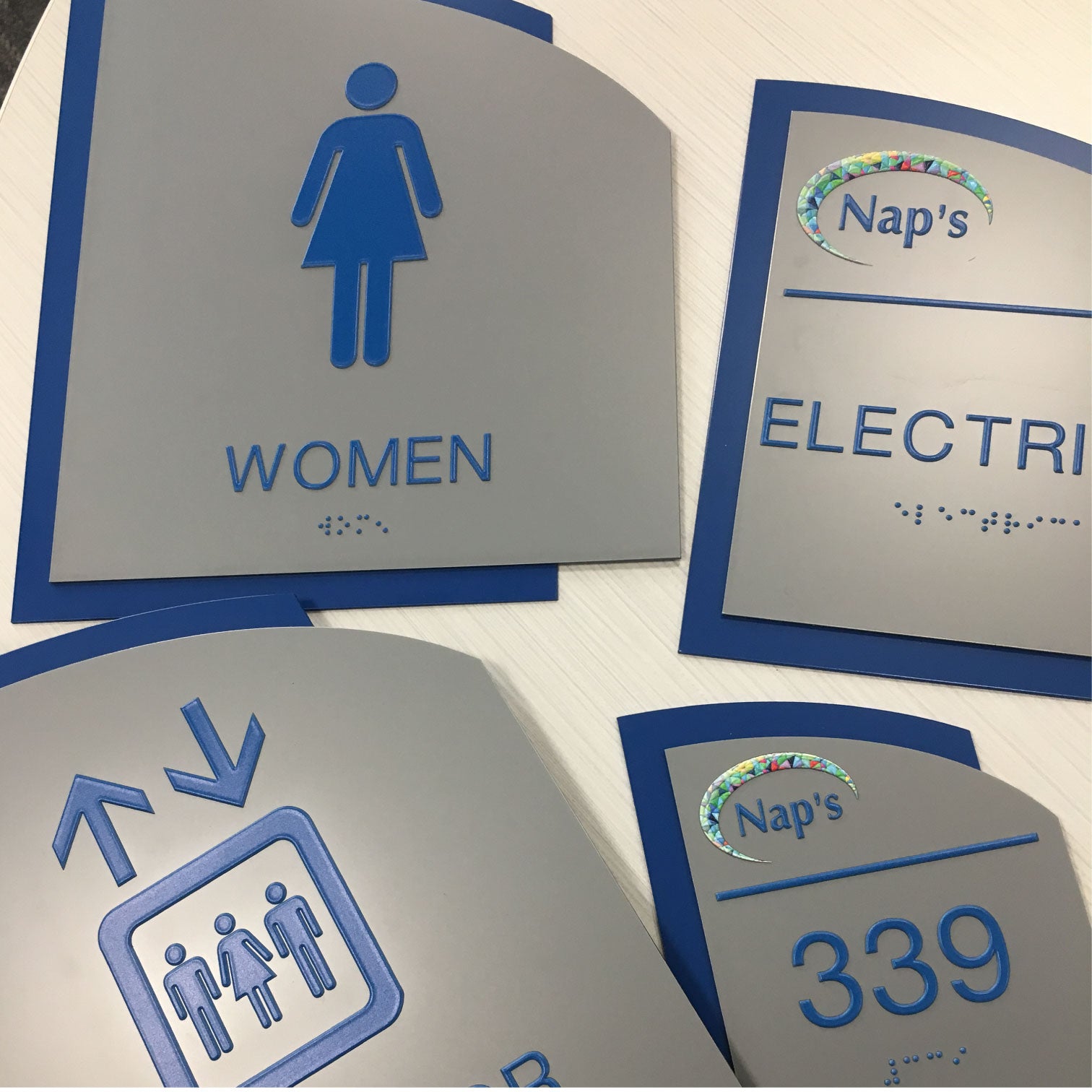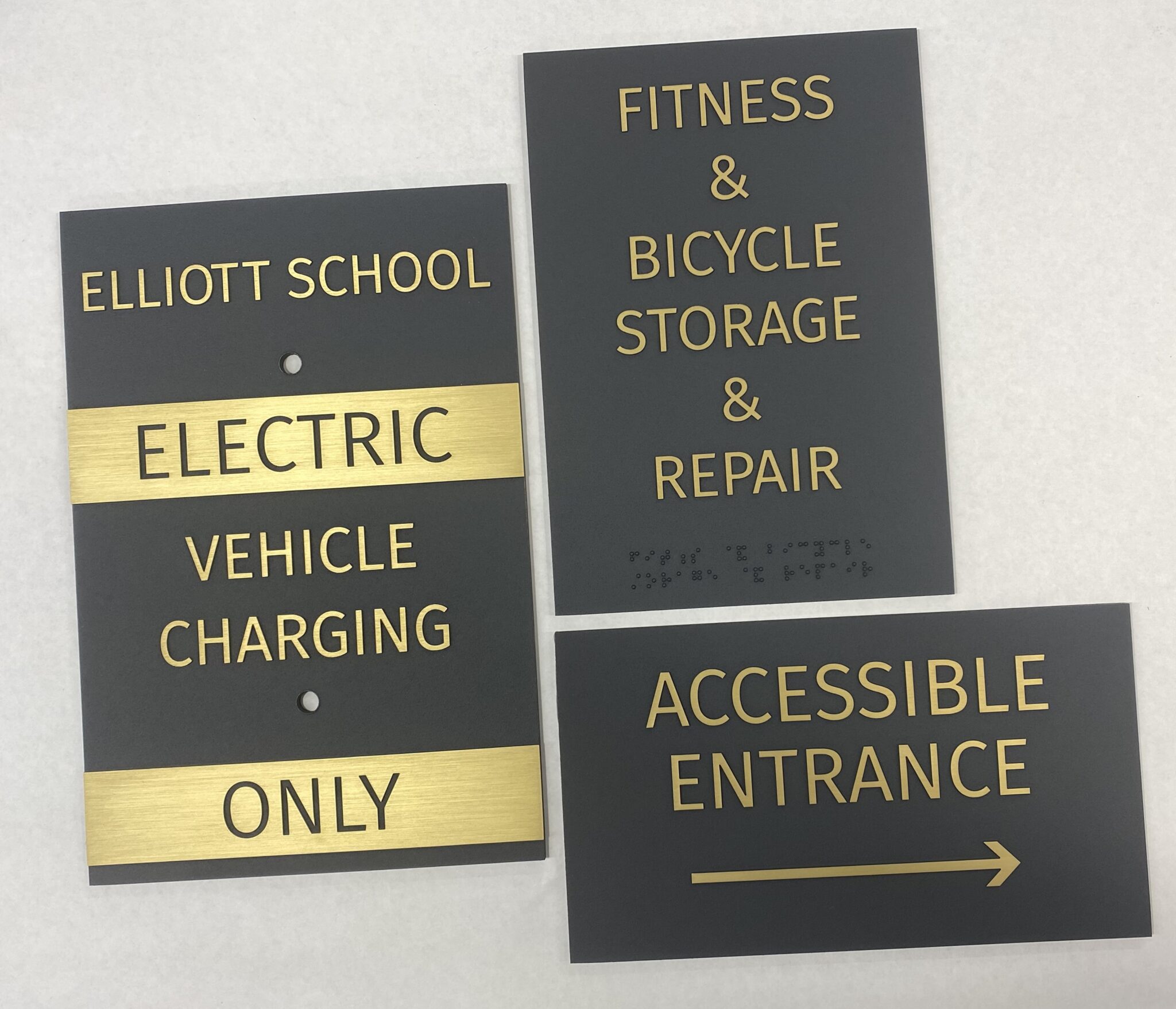Customizing ADA Signs to Satisfy Your Details Needs
Customizing ADA Signs to Satisfy Your Details Needs
Blog Article
Exploring the Key Attributes of ADA Signs for Boosted Access
In the realm of accessibility, ADA signs serve as silent yet powerful allies, guaranteeing that spaces are comprehensive and accessible for individuals with impairments. By integrating Braille and responsive aspects, these indications damage barriers for the visually damaged, while high-contrast color pattern and understandable font styles accommodate varied aesthetic needs. Their calculated positioning is not arbitrary however rather a calculated effort to assist in smooth navigating. Yet, past these features exists a deeper narrative about the advancement of inclusivity and the recurring dedication to developing equitable spaces. What more could these indications symbolize in our search of universal access?
Significance of ADA Conformity
Ensuring conformity with the Americans with Disabilities Act (ADA) is crucial for fostering inclusivity and equal gain access to in public areas and work environments. The ADA, enacted in 1990, mandates that all public centers, employers, and transport services suit individuals with handicaps, guaranteeing they delight in the same civil liberties and possibilities as others. Compliance with ADA criteria not just meets legal responsibilities but additionally improves a company's reputation by demonstrating its dedication to variety and inclusivity.
One of the crucial elements of ADA conformity is the execution of obtainable signage. ADA signs are developed to ensure that people with handicaps can easily navigate through structures and rooms.
In addition, sticking to ADA guidelines can reduce the threat of potential penalties and legal effects. Organizations that fall short to abide by ADA guidelines may deal with claims or charges, which can be both destructive and economically burdensome to their public image. Hence, ADA conformity is important to promoting a fair atmosphere for everybody.
Braille and Tactile Elements
The consolidation of Braille and responsive elements into ADA signage embodies the concepts of ease of access and inclusivity. It is commonly placed beneath the corresponding text on signage to make certain that individuals can access the information without visual assistance.
Tactile elements expand past Braille and include elevated personalities and symbols. These components are designed to be noticeable by touch, permitting individuals to identify room numbers, washrooms, exits, and other crucial locations. The ADA sets certain guidelines regarding the dimension, spacing, and placement of these tactile components to enhance readability and guarantee uniformity throughout various settings.

High-Contrast Color Schemes
High-contrast color pattern play a pivotal function in improving the exposure and readability of ADA signage for people with aesthetic disabilities. These plans are crucial as they make best use of the difference in light reflectance between text and background, guaranteeing that signs are conveniently noticeable, even from a range. The Americans with Disabilities Act (ADA) mandates using details shade contrasts to suit those with minimal vision, making it a critical facet of compliance.
The effectiveness of high-contrast shades hinges on their capability to stick out in different lights conditions, including poorly lit environments and locations with glare. Generally, dark text on a light background or light text on a dark background is utilized to achieve optimum contrast. For example, black message on a yellow or white background supplies a stark aesthetic difference that aids in fast acknowledgment and comprehension.

Legible Fonts and Text Size
When considering the design of ADA signage, the option of clear typefaces and suitable message dimension can not be overstated. The Americans with Disabilities Act (ADA) mandates that typefaces need to be not italic and sans-serif, oblique, script, highly ornamental, or of uncommon form.
According to ADA standards, the minimal message elevation need to be 5/8 inch, and it ought to raise proportionally with viewing range. Uniformity in message size contributes to a natural aesthetic experience, assisting individuals in navigating settings efficiently.
Moreover, spacing between letters and lines read here is indispensable to this link readability. Appropriate spacing avoids personalities from appearing crowded, boosting readability. By sticking to these standards, designers can dramatically boost access, ensuring that signage serves its designated purpose for all individuals, despite their aesthetic capacities.
Efficient Positioning Approaches
Strategic positioning of ADA signs is vital for making best use of accessibility and making sure compliance with legal requirements. ADA standards state that indications should be installed at a height between 48 to 60 inches from the ground to guarantee they are within the line of sight for both standing and seated individuals.
In addition, signs should be placed beside the latch side of doors to allow easy identification prior to entrance. This positioning assists people locate rooms and spaces without blockage. In instances where there is no door, indications ought to be situated on the closest adjacent wall surface. Uniformity in indication placement throughout a facility enhances predictability, lowering confusion and boosting general customer experience.

Conclusion
ADA signs play an important duty in promoting access by incorporating functions that attend to the requirements of people with disabilities. These aspects collectively cultivate a comprehensive atmosphere, underscoring the relevance of ADA conformity in making certain equivalent access for all.
In the world of availability, ADA indicators offer as silent yet effective allies, making sure that rooms are inclusive and navigable for people with impairments. The ADA, enacted in 1990, mandates that all public centers, employers, and transport services suit people with specials needs, guaranteeing they delight in the very same legal rights and chances as others. ADA Signs. ADA indications are developed to make sure that people with disabilities can conveniently browse look what i found via buildings and areas. ADA guidelines stipulate that indicators must be placed at a height between 48 to 60 inches from the ground to guarantee they are within the line of sight for both standing and seated people.ADA indicators play a crucial function in promoting ease of access by incorporating attributes that deal with the requirements of people with handicaps
Report this page